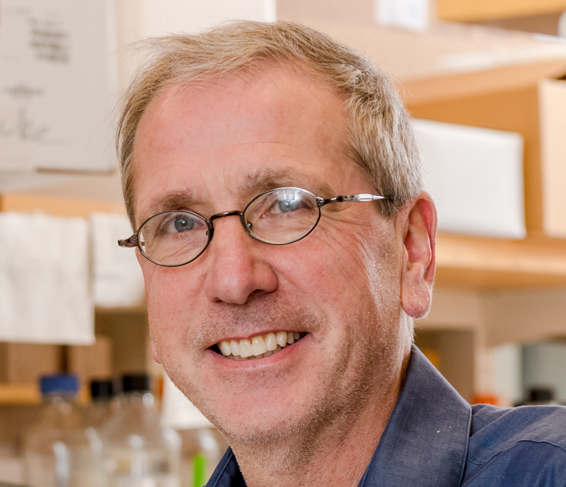How the ATM Protein Regulates the DNA Damage Response
Most human cancers are treated by either chemotherapy or radiation, which target the DNA of tumor cells. However, the efficacy of these treatments varies greatly between different tumor types: many tumors are relatively resistant to radiation therapy, while others are more sensitive. Our long-term goal is to identify the key biochemical pathways that regulate sensitivity to radiation therapy and to identify novel therapeutic compounds that inhibit their function.The inherited disease ataxia-telangiectasia (AT) is characterized by numerous defects, including increased sensitivity to radiation, defective DNA repair, loss of DNA damage-induced signaling pathways, and aberrant cell cycle control. The ATM protein, encoded by the AT gene, is a large protein kinase. ATM can phosphorylate many proteins involved in the two key responses to DNA damage - the activation of cell cycle checkpoints and the regulation of DNA repair. The ATM protein is therefore essential for coordinating the cells response to DNA damage. A major effort in our laboratory is to identify how the ATM protein detects DNA damage and to determine how ATM relays this information to the DNA repair machinery. We have identified several essential motifs within the ATM protein structure, including a leucine zipper domain, which mediates protein-protein interactions, as well as an essential substrate binding domain located at the N-terminal of the ATM protein. Recently, we have identified a novel signaling pathway in which the activation of the ATM protein in response to DNA damage involves acetylation of ATM. This acetylation of ATM is brought about through the activation of the TIP60 histone acetyltransferase. TIP60 binds to the ATM protein; when ATM is recruited to sites of DNA damage, interactions between the damaged chromatin and the TIP60 protein lead to activation of TIP60's acetyltransferase activity, leading to acetylation and activation of the ATM protein. A second major research area is to understand how chromatin structure impacts the repair of DNA damage. Chromatin is a dynamic structure containing both open, transcriptionally active regions (euchromatin) and compacted, transcriptionally inactive regions (heterochromatin). DNA damage within these distinct chromatin domains requires specific sets of proteins to alter chromatin structure and facilitate DNA repair. We are currently examining the role of histone modifications, and in particular histone methylation, in regulating the ability of cells to detect and repair DNA damage. Our results indicate that a specific histone modification, H3K9me3, plays a critical role in DNA damage responses by regulating the recruitment and activation of protein complexes, including the NuA4 complex, to damaged chromatin. NuA4 then alters chromatin structure by facilitating both the acetylation of histones and by decreasing nucleosome stability in the regions adjacent to DNA breaks. This relaxation of the chromatin structure by NuA4 promotes DNA repair by facilitating the recruitment of DNA repair proteins such as brca1 and 53BP1 to sites of damage.Our long term goal is to develop small molecule inhibitors of the enzymes which control histone methylation and demethylation as potential therapeutic agents. By modifying the levels of histone methylation in tumor cells, we expect to be able to manipulate the ability of cells to repair DNA damage, and therefore sensitize cells to chemotherapy or radiotherapy. Developing epigenetic therapy to directly modulate DNA repair pathways in tumor cells is therefore expected to lead to new therapies to treat cancer..



